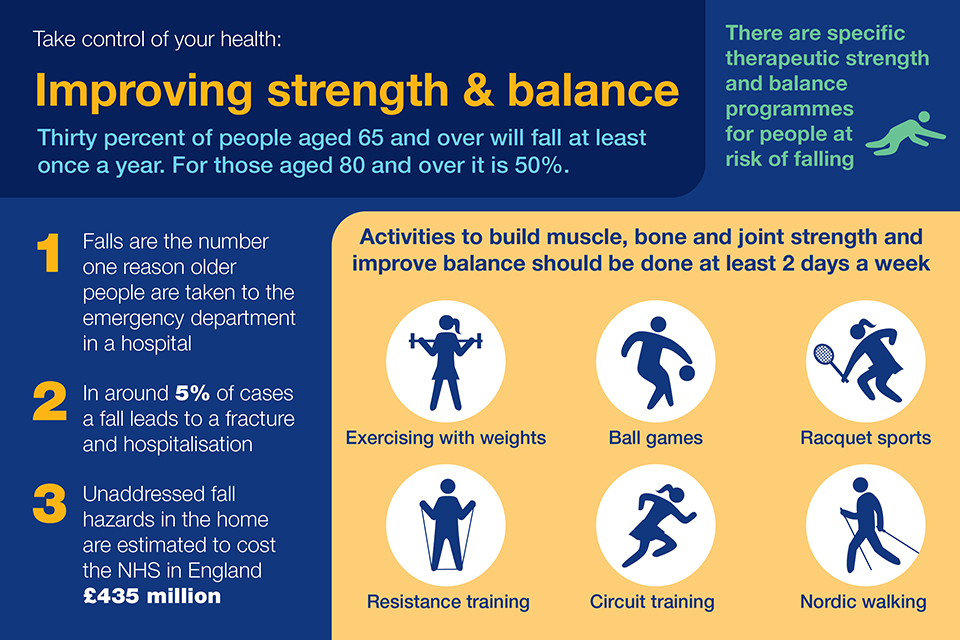Not known Details About Dementia Fall Risk
Table of ContentsSome Known Facts About Dementia Fall Risk.Some Known Details About Dementia Fall Risk The smart Trick of Dementia Fall Risk That Nobody is DiscussingDementia Fall Risk Fundamentals Explained
A loss risk analysis checks to see just how most likely it is that you will fall. It is mainly provided for older adults. The evaluation normally consists of: This consists of a series of concerns about your total health and wellness and if you've had previous falls or issues with equilibrium, standing, and/or strolling. These tools examine your stamina, equilibrium, and gait (the means you stroll).STEADI consists of screening, analyzing, and intervention. Interventions are recommendations that may minimize your danger of dropping. STEADI includes three actions: you for your threat of dropping for your risk aspects that can be boosted to try to avoid drops (as an example, balance problems, damaged vision) to reduce your threat of falling by utilizing efficient strategies (for instance, supplying education and resources), you may be asked a number of concerns including: Have you fallen in the past year? Do you feel unsteady when standing or strolling? Are you stressed over falling?, your service provider will check your strength, equilibrium, and gait, utilizing the complying with autumn assessment tools: This examination checks your gait.
Then you'll rest down once again. Your service provider will certainly inspect just how lengthy it takes you to do this. If it takes you 12 secs or more, it may indicate you are at greater danger for an autumn. This test checks stamina and equilibrium. You'll being in a chair with your arms went across over your chest.
Relocate one foot halfway onward, so the instep is touching the big toe of your other foot. Relocate one foot fully in front of the various other, so the toes are touching the heel of your various other foot.
What Does Dementia Fall Risk Mean?
A lot of falls take place as an outcome of several contributing variables; therefore, managing the risk of falling begins with identifying the factors that add to drop threat - Dementia Fall Risk. Some of one of the most pertinent danger elements consist of: History of prior fallsChronic medical conditionsAcute illnessImpaired stride and balance, lower extremity weaknessCognitive impairmentChanges in visionCertain high-risk medicines and polypharmacyEnvironmental factors can likewise boost the risk for drops, consisting of: Poor lightingUneven or damaged flooringWet or unsafe floorsMissing or damaged handrails and grab barsDamaged or improperly equipped equipment, such as beds, wheelchairs, or walkersImproper usage of assistive devicesInadequate guidance of the individuals living in the NF, consisting of those who exhibit aggressive behaviorsA effective loss threat monitoring program calls for a thorough professional assessment, with input from all participants of the interdisciplinary team

The treatment strategy should additionally consist of treatments official site that are system-based, such as those that advertise a safe environment (proper lights, handrails, get bars, etc). The performance of the interventions should be assessed occasionally, and the treatment plan changed as necessary to reflect adjustments in the fall threat analysis. Carrying out an autumn threat monitoring system making use of evidence-based best technique can reduce the frequency of drops in the NF, while limiting the possibility for fall-related injuries.
How Dementia Fall Risk can Save You Time, Stress, and Money.
The AGS/BGS standard suggests evaluating all grownups matured 65 years and older for fall danger annually. This testing is composed of asking people whether they have dropped 2 or even more times in the past year or sought clinical attention for a loss, or, if they have not fallen, whether they feel unsteady when strolling.
Individuals who have actually fallen as soon as without injury should have their balance and stride reviewed; those with gait or he said equilibrium irregularities should obtain additional analysis. A background of 1 loss without injury and without gait or balance issues does not necessitate additional assessment beyond continued annual loss risk screening. Dementia Fall Risk. A loss threat analysis is called you can try these out for as part of the Welcome to Medicare exam

Dementia Fall Risk for Dummies
Documenting a drops background is one of the high quality indications for fall prevention and monitoring. Psychoactive medications in certain are independent predictors of drops.
Postural hypotension can often be relieved by lowering the dosage of blood pressurelowering medications and/or stopping medications that have orthostatic hypotension as a side impact. Usage of above-the-knee support pipe and resting with the head of the bed elevated might likewise minimize postural reductions in blood pressure. The preferred aspects of a fall-focused health examination are displayed in Box 1.

A pull time higher than or equal to 12 seconds suggests high fall danger. The 30-Second Chair Stand examination assesses lower extremity stamina and equilibrium. Being incapable to stand up from a chair of knee elevation without utilizing one's arms indicates increased autumn threat. The 4-Stage Balance examination evaluates fixed equilibrium by having the individual stand in 4 settings, each gradually more tough.